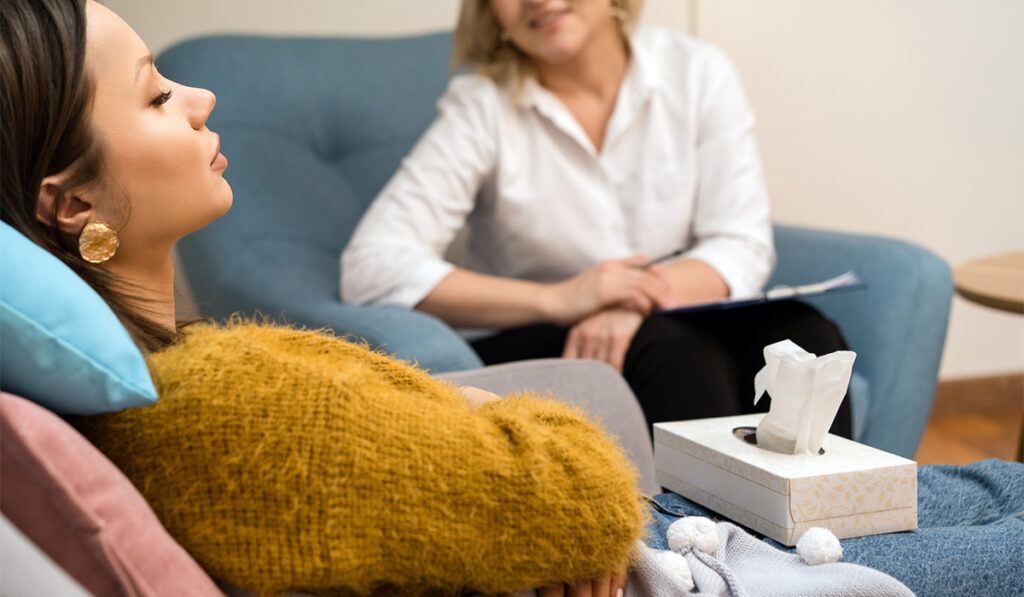When patients who had chronic pain as well as lower urinary-tract symptoms underwent hypnosis, their urinary symptoms diminished, a research team found in a study reported in Neurourology and Urodynamics.
Furthermore, people with the worst symptoms made the greatest gains, said lead author Lindsey C. McKernan, Ph.D., an associate professor in the Department of Psychiatry and Behavioral Sciences at Vanderbilt University Medical Center.
“It was exciting to see that we can change the urologic symptoms with a method that doesn’t use medications.”
“Treatment for people with urinary symptoms typically involves medications that are not perfect and need to be taken for life, and perhaps some lifestyle modifications,” McKernan said. “It was exciting to see that we can change the urologic symptoms with a method that doesn’t use medications, so the inherent risk of side effects is eliminated.”
Skill for Self-Care
The purpose of treating patients with hypnosis is to give people a skill to use on their own, McKernan explained.
“While they are having hypnosis during the sessions, we also give them recordings to use between sessions and teach people how to practice on their own,” she said. “As they learn to do self-hypnosis, they begin moving into a relaxed and focused state with their symptoms. It does involve some practice.”
Study coauthor W. Stuart Reynolds, M.D., M.P.H., an associate professor of urology at Vanderbilt, said hypnosis is increasing being studied for urological conditions.
“But the approach that we took in this study, having people participate in a group hypnosis, is somewhat less studied,” Reynolds explained.
The Vanderbilt team says their new study grew out of previous investigation into how group hypnosis might help individuals with chronic pain.
“There were so many people in that population that had lower urinary tract symptoms, such as frequency or urgency, that we decided to see how the intervention affected those symptoms,” McKernan said.
Hypnosis Helped
In the new study, each group of participants included 5 to 10 people. The group hypnosis protocol involved eight weeks of sessions.
“Patients experienced significant and meaningful improvements in lower urinary tract symptoms following group hypnosis (p = 0.006). There was a significant interaction between baseline symptom severity and treatment (p < 0.001), such that those with severe symptoms experienced the most pronounced gains over time (e.g., an 8.8 point reduction),” the researchers wrote.
Women made up 70 percent of the 64 trial participants, with a median age of 51. The cohort’s racial makeup was 86 percent white, 3 percent Black, and 5 percent Hispanic.
For participants with moderate-to-severe urinary tract symptoms, gains increased over time and the improvements in the lower urinary tract symptoms occurred independently of pain relief, they found.
Varied Hypnotic Suggestions Employed
Each weekly 90-minute session took place at Vanderbilt’s Osher Center for Integrative Health and were led by a psychologist or a psychologist-in-training. Generally, two facilitators conducted each session.
Sessions started with a discussion, focusing on expectations at the first session, educational information and, subsequently, on the participants’ experiences practicing and using the skills at home. Then came 20- to 30-minutes of actual hypnosis, followed by further discussion of the participants’ experience. Sessions ended with time for questions and answers.
“The facilitators intentionally made use of varied sorts of hypnotic suggestions that addressed different needs, such as comfort, having control of your pain, and sleeping better,” McKernan said.
Establishing Daily Practice
Participants taught themselves to become hypnotized by using recordings that included hypnotic inductions and suggestions. They also learned to self-hypnotize without recordings.
“The facilitators encouraged the participants to listen to at least one recording a day and gave them instructions on how often to practice at home, along with engaging in a brief self-hypnosis practice around three to five times daily,” said Reynolds.
Participants also used reference materials and workbooks.
Wider Applications
At Vanderbilt, clinicians are also using hypnosis to improve the experience of people undergoing procedures in the clinic.
“Hypnosis allows us to do outpatient procedures and have them better tolerated.”
“Urologic procedures can be uncomfortable for patients,” Reynolds said. “While we sometimes use medications to make those procedures easier for patients, we also use hypnosis to help people feel more relaxed and comfortable. Hypnosis allows us to do outpatient procedures and have them better tolerated.”
The group hypnosis program for chronic pain remains active at the Vanderbilt Osher Center for Integrative Health. For referrals, please call (615) 343-1554.






